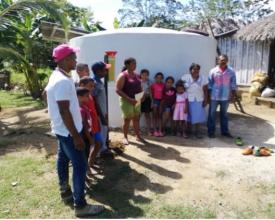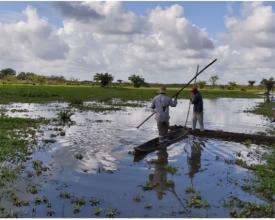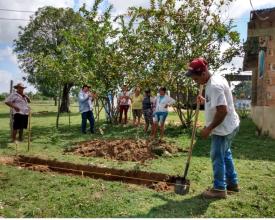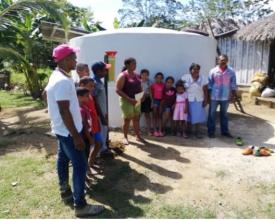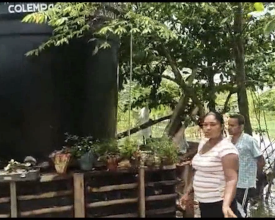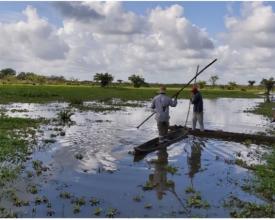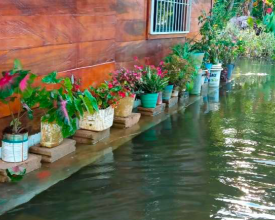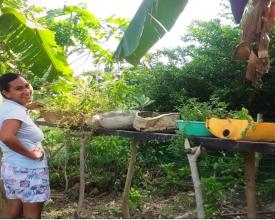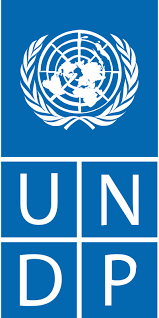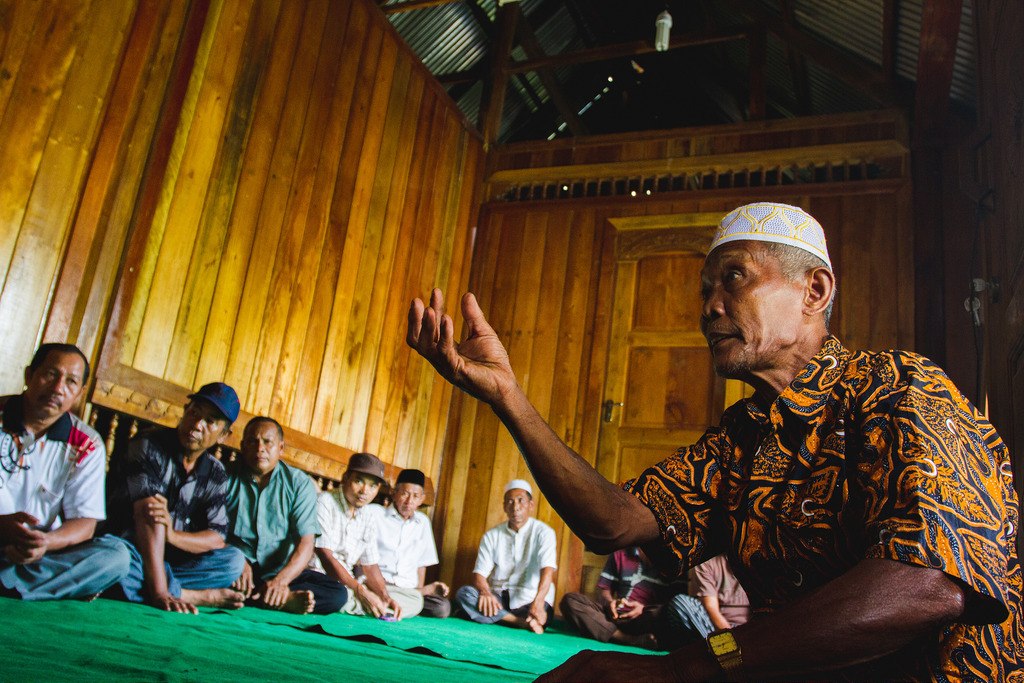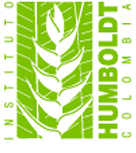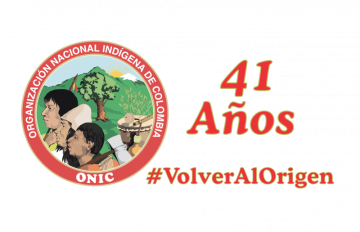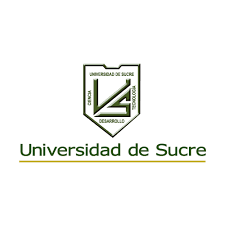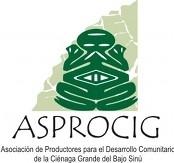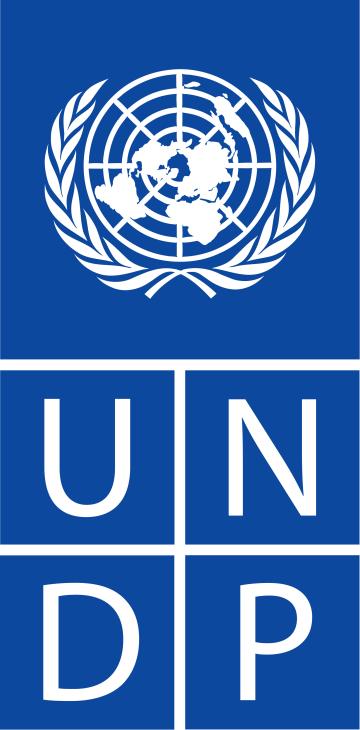
Ampliación de las prácticas de gestión del agua resilientes al clima para las comunidades vulnerables de La Mojana (Colombia)
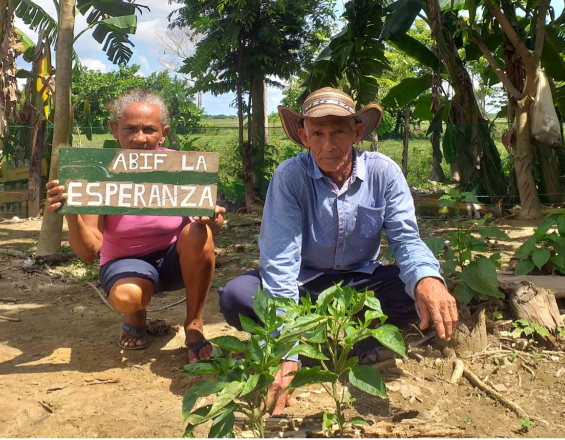
Las intensas inundaciones y las prolongadas temporadas secas debidas a cambios en los patrones de precipitaciones han causado impactos significativos en la población de la región de La Mojana, y las proyecciones climáticas prevén que sean cada vez más frecuentes e intensas.Los impactos incluyen la pérdida de cosechas, cambios en los ecosistemas y su capacidad para proporcionar servicios de gestión del agua e impactos adversos derivados de periodos secos más largos. Estos impactos ejercen una presión adicional sobre las fuentes de agua sometidas a estrés, afectando tanto al suministro como a la calidad. La solución presentada adopta una estrategia a largo plazo de reducción del riesgo de catástrofes por sequía e inundaciones basada en los riesgos del cambio climático. No se basa únicamente en las infraestructuras de abastecimiento de agua, sino también en la restauración de los servicios ecosistémicos para una gestión regional adaptada del agua y la mejora de la capacidad de los medios de subsistencia rurales resistentes al clima y compatibles con los ecosistemas, lo que repercute en la seguridad alimentaria e hídrica de los hogares.
Contexto
Défis à relever
Las proyecciones climáticas indican que en la mayor parte de La Mojana se producirá una reducción de los niveles totales de precipitaciones junto con un aumento de las temperaturas. Los datos muestran que los periodos secos medios (días sin lluvia) podrían prolongarse entre 12 y 30 días.
La Mojana es extremadamente vulnerable a la variabilidad climática y muy sensible a los efectos de las inundaciones y los periodos secos prolongados que han provocado la pérdida de cosechas. La actividad agrícola insostenible afecta a la dinámica natural del flujo de agua en el ecosistema de humedales de la región que proporciona servicios en forma de protección natural contra inundaciones, purificación de agua y sedimentos y suministro de agua, así como su valor económico a través del uso agroproductivo.
El cambio climático ha aumentado la dependencia de la comunidad de estos servicios, ya que el agua se ha vuelto más escasa debido a los prolongados periodos secos que han sobrecargado la infraestructura hídrica existente. Por otro lado, las inundaciones serán cada vez más frecuentes, lo que aumentará la necesidad de que los humedales actúen como amortiguadores.
Ubicación
Procesar
Resumen del proceso
Los bloques de construcción no sólo abordan las barreras, sino que trabajan en todos los insumos clave para la gestión del agua, incluida la información sobre la capacidad de infiltración del acuífero (bloque de construcción 1), proporcionando acceso al suministro de agua (bloque de construcción 2), ajustando la producción agrícola de acuerdo con las proyecciones climáticas en términos de sequía (bloques de construcción 4 y 5) y restaurando una fuente principal de gestión del agua que es el propio ecosistema del humedal (bloque de construcción 3). Y lo que es más importante, lo hace capacitando a las comunidades y organizaciones locales para la sostenibilidad del proyecto a largo plazo, lo que se consigue no sólo mediante el acceso a mejores sistemas de información climática, sino también mediante la capacidad de utilizarlos para una correcta planificación a varios niveles (planificación y productividad locales).
Esto permite al proyecto mejorar la resiliencia trabajando con el ecosistema (en lugar de contra él) para gestionar los impactos climáticos. Se trata de un cambio importante con respecto a los anteriores mecanismos de enfoque del riesgo introducidos en la región, que buscaban contener las inundaciones en lugar de gestionarlas como parte del proceso hidrológico natural de la región. El trabajo con los medios de vida comunitarios ha permitido, en cierto modo, que las comunidades rescaten medios de vida tradicionales que se habían perdido.
Bloques de construcción
Fortalecimiento de la comprensión y sistematización del conocimiento sobre los impactos del cambio climático (CC) en la gestión del agua en la región.
Los procesos de planificación local no incorporaron consideraciones relativas al cambio climático debido a la falta de orientación técnica e institucional sobre cómo incluir los impactos, las proyecciones y los riesgos climáticos en la planificación y las actividades municipales cotidianas, como la concesión de permisos de extracción de agua. Las partes interesadas tenían poca conciencia práctica de lo que significaban las proyecciones climáticas y de las opciones de adaptación disponibles. La información no siempre estaba al alcance de todos ni estaba empaquetada para traducir el aprendizaje en acción.
El proyecto invirtió en el desarrollo de productos de conocimiento para la gestión del agua, como un modelo de flujo y calidad de las aguas subterráneas que proporciona la información necesaria para mejorar las capacidades de gestión y regulación del agua de las autoridades locales. El modelo cuenta con el apoyo de una guía para los responsables de la toma de decisiones con el fin de garantizar la capacidad local para su uso en la planificación. El proyecto también ha invertido en una estrategia de socialización que permita a las comunidades recibir información y formación específicas para una mayor comprensión. Esto ha incluido la inversión en una estrategia indígena que incluye información y métodos tradicionales sobre la gestión del agua para el diseño de un módulo de formación que se presentará a través de universidades indígenas. Para garantizar la continuidad y disponibilidad de la información, ésta se ha sistematizado en un banco de datos ubicado en una Agencia Nacional.
Factores facilitadores
Asociaciones clave y comprensión de los agentes, preocupaciones y vulnerabilidades locales, incluida la identificación de mensajes, necesidades y vehículos de comunicación. La colaboración con el Fondo Nacional de Adaptación ha sido un factor clave para garantizar la coordinación y la integración de los productos de gestión de los conocimientos y su utilización.
Lección aprendida
La socialización es una estrategia clave que debe incorporarse para garantizar un cambio transformador. Esto incluye invertir en mensajes adaptados a las principales partes interesadas para favorecer la pertinencia de los mensajes y garantizar que la información sea utilizada por estos grupos de partes interesadas clave. Trabajar a través de las instituciones locales, las partes responsables y los actores locales también permite que la gestión del conocimiento permanezca en el territorio, creando así una importante fuente de apropiación local.
Recursos
Mejora de las infraestructuras de los sistemas hídricos para mejorar el suministro de agua potable en las comunidades rurales en caso de sequía e inundaciones.
El acceso a fuentes fiables de agua potable es uno de los problemas más críticos de La Mojana. Más del 42% de la población no tiene acceso a agua potable. Esta situación se verá agravada por el aumento de las temperaturas y la mayor frecuencia de fenómenos extremos como las inundaciones.
El proyecto ha invertido en un conjunto diverso de soluciones hídricas basadas en un análisis de vulnerabilidad local que se desarrolló categorizando la capacidad de acceso al agua. Las soluciones incluyen sistemas domésticos y comunitarios de recogida de agua de lluvia para captar agua durante las estaciones lluviosas y la mejora de las infraestructuras hídricas existentes. Para ello se repararon los microacueductos locales y se garantizó que tuvieran capacidad para resistir el uso durante los meses de verano (uso de paneles solares para reducir la presión sobre las bombas de agua, mejora de los sistemas de bombeo y de los depósitos) y que pudieran proteger las fuentes de agua de la contaminación durante las inundaciones.
Las soluciones van acompañadas de formación sobre el funcionamiento y mantenimiento de estos sistemas y el control de la calidad del agua. También se imparte formación a las juntas locales del agua para mejorar la capacidad comunitaria de gestión del agua. La capacidad se proporciona a través de los responsables locales para garantizar que los conocimientos permanezcan en la región y sean pertinentes y que los hogares sean conscientes del impacto que el cambio climático tendrá en las fuentes de agua locales.
Factores facilitadores
Los conocimientos derivados de un análisis del flujo hidrológico en la región proporcionaron una comprensión inicial del impacto que el cambio climático podría tener en términos de fuentes de agua. Esto permitió al proyecto identificar la vulnerabilidad y las necesidades de agua. Un análisis de vulnerabilidad desarrollado por el proyecto ayudó a evaluar la solución hídrica correcta a nivel doméstico en función de su acceso a las infraestructuras hídricas tradicionales. La colaboración con los municipios locales ha sido un factor clave, así como el trabajo con las partes responsables que tienen su sede en el territorio.
Lección aprendida
Los resultados del análisis de vulnerabilidad se convirtieron en una aportación clave a la hora de asignar soluciones hídricas, ya que permitieron al proyecto identificar nuevas inversiones y aportar la adicionalidad necesaria para que funcionaran bien en condiciones climáticas extremas. El análisis de vulnerabilidad también permitió al proyecto ajustarse a las cambiantes condiciones locales, como las interrupciones relacionadas con el COVID. Uno de los resultados ha sido el impacto en la generación de resiliencia local al COVID al proporcionar el acceso al agua necesario para aplicar protocolos de higiene.
Trabajar con los municipios ha permitido al proyecto coordinarse a nivel local y, en algunos casos, ha dado lugar a una mayor asignación de cofinanciación. Ha permitido al proyecto abordar su teoría del cambio de forma proactiva, incorporando consideraciones climáticas a las inversiones municipales. Un reto clave ha sido la gestión de los impactos del COVID que han afectado al precio de los insumos para las infraestructuras hídricas y su transporte. El proyecto ha recurrido a los responsables locales de la zona para proporcionar más apoyo al desarrollo de capacidades y a la socialización general de las soluciones.
Recursos
Servicios ecosistémicos de humedales restaurados para la gestión del agua
La zona está situada en un sistema de humedales que presta servicios de protección natural contra inundaciones, depuración y abastecimiento de agua, así como su valor económico en los medios de vida de la comunidad. El cambio climático ha aumentado la dependencia de estos servicios por parte de la comunidad, ya que el agua escasea y las inundaciones son más frecuentes.
El proyecto ha colaborado con el Ministerio de Medio Ambiente, el Instituto de Investigación Alexander von Humboldt y los departamentos locales de medio ambiente en la restauración de zonas clave de humedales. Los trabajos de restauración se guían por la modelización de los flujos hidrológicos desarrollada en la región por el Fondo Nacional de Adaptación, que ha servido de importante aportación a la planificación local. Los trabajos de restauración se organizan mediante planes comunitarios de restauración y seguimiento medioambiental llevados a cabo por las comunidades locales, especialmente las mujeres. Las acciones de restauración incluyen un enfoque de paisaje productivo que premia la compatibilidad con los ecosistemas de las actividades productivas de la región, incluidas las actividades agroforestales y silvo pastoriles. Esto incluye la identificación de oportunidades de subsistencia compatibles con el ecosistema que sean inclusivas para las mujeres y los pueblos indígenas. El proyecto está trabajando con asociaciones ganaderas para desarrollar un código de prácticas a lo largo de los humedales como parte de su enfoque para la gestión sostenible de los ecosistemas.
Factores facilitadores
El conocimiento de la hidrología de los humedales, la asociación con instituciones medioambientales nacionales y locales y el trabajo con las comunidades han sido factores esenciales que han permitido que estas actividades garanticen que la restauración se ajusta a la planificación local y nacional, a la vez que proporciona beneficios y, por tanto, aceptación por parte de las poblaciones locales.
Lección aprendida
Trabajar con asociaciones productivas para mejorar la capacidad de gestión productiva sostenible permite al proyecto crear alianzas estratégicas para la restauración del ecosistema a la vez que crea conciencia sobre los beneficios que aporta el ecosistema de humedales. El ecosistema de humedales es una parte importante de la identidad de La Mojana, de ahí que el proyecto haya trabajado con las comunidades para recuperar esta identidad anfibia trabajando con los pulsos naturales del ecosistema en lugar de contra ellos. En este sentido, la labor de restauración forma parte de la estrategia de adaptación comunitaria en la que se ha basado el proyecto para garantizar que la resiliencia tenga en cuenta las necesidades de la comunidad y que los beneficios lleguen a las comunidades locales de forma inclusiva. Este es un aspecto clave de la teoría del cambio del proyecto y forma parte de la estrategia de sostenibilidad del proyecto al permitir un cambio de cultura hacia la actividad agroproductiva en la zona.
Mejora de los sistemas de alerta rápida
Este Building block reconoce la creciente volatilidad meteorológica (sobre todo en forma de precipitaciones) que se dejará sentir en La Mojana como consecuencia del cambio climático. Aunque existían algunas capacidades locales de alerta temprana, la cobertura de las estaciones meteorológicas y la capacidad de gestión de datos eran insuficientes para emitir alertas meteorológicas localizadas que permitieran a las comunidades proteger los medios de vida locales, sobre todo teniendo en cuenta que anteriores incidentes de inundaciones habían provocado importantes pérdidas económicas y afectado a la seguridad hídrica y meteorológica.
El proyecto abordó la necesidad de sistemas de alerta temprana potenciando el desarrollo de un centro regional de previsión con capacidad de modelización hidrológica, así como en el desarrollo de productos de información de alerta temprana. El resultado ha sido la elaboración de boletines y alertas agrícolas oportunos que han mejorado el acceso de las comunidades a la información climática. El proyecto también ha proporcionado información sobre cómo gestionar las alertas tempranas, buscando integrar la capacidad local. Esto supone pasar de la información a la acción, al tiempo que se relaciona con las inversiones realizadas a través de los bloques de construcción 2, 3 y 5, que generan capacidad de adaptación en la gestión del agua para uso doméstico y productivo.
Factores facilitadores
Un estudio hidrológico de los sistemas de humedales desarrollado por el Fondo Nacional de Adaptación que incorporaba el cambio climático demostró la relevancia de los sistemas de alerta temprana para proteger los medios de subsistencia y por qué era necesario potenciarlos. El proyecto también estableció una relación con el sistema meteorológico nacional (IDEAM) que permitió desarrollar un sistema de previsión regional que se integraría en la red nacional de estaciones.
Lección aprendida
Las alertas tempranas proporcionan una base para la acción, ya que permiten a las comunidades comprender de forma tangible la relevancia de las inversiones del proyecto y cómo se relacionan con ellas. Esto es clave si se tienen en cuenta los incidentes de inundaciones pasadas con efectos devastadores para los medios de subsistencia. Sin embargo, proporcionar estas alertas y boletines es insuficiente si no va acompañado de una estrategia de socialización activa para que la información sea comprendida y conduzca a una mejor toma de decisiones. El trabajo con asociaciones productivas, responsables locales y autoridades medioambientales locales ha sido un pilar en la comunicación de información a las comunidades.
El proyecto ha mejorado las capacidades locales. Sin embargo, aún se está desarrollando una estrategia de sostenibilidad a largo plazo para garantizar que, una vez finalizado el proyecto, el centro regional de previsión siga funcionando. Esto se ve facilitado por un acuerdo con el IDEAM para el mantenimiento de las estaciones en las que se ha invertido, así como por la existencia de instituciones de enseñanza en la región y de autoridades medioambientales fuertes.
Recursos
Agroecosistemas resilientes al clima y apoyo a la extensión
El bloque de construcción proporciona servicios de extensión agrícola para apoyar la gestión eficaz del agua y la investigación y capacidad en agricultura climáticamente inteligente a nivel comunitario. Se centra en la promoción de cultivos agrodiversos y locales resistentes al clima y en la aplicación de prácticas productivas adaptadas al clima para mejorar los medios de vida rurales que se adaptan a las proyecciones climáticas tanto de sequía como de inundaciones. Estos sistemas productivos agrodiversos premian la biodiversidad local y son compatibles con los sistemas de humedales, rescatando y favoreciendo así los cultivos tradicionales que se habían perdido por el monocultivo y que han demostrado resistir mejor las tensiones climáticas.
Los hogares reciben kits de jardinería doméstica y gestión del agua que incluyen semillas (suministradas a través de bancos de semillas locales gestionados por mujeres), mantillo y otros insumos. Se imparte formación sobre cómo establecer estos sistemas, incluido el uso de tecnologías de riego de bajo coste y la elevación de los bancales de cultivo. El apoyo a la extensión rural permite a los hogares aprender haciendo a través de la experimentación con un enfoque de escuela de campo para agricultores. Esto ha permitido rescatar y sistematizar los conocimientos locales y crear alianzas con instituciones de investigación locales. Estos huertos domésticos han mejorado la seguridad alimentaria frente al COVID y las recientes inundaciones.
Factores facilitadores
La experiencia adquirida en un proyecto anterior financiado por el Fondo de Adaptación en la región sirvió de base para la ampliación del proyecto, incluida la creación de bancos de semillas locales gestionados por mujeres. La existencia de instituciones de investigación y centros de aprendizaje locales también ha demostrado ser muy valiosa para garantizar que los conocimientos sigan siendo locales y que el apoyo a la extensión sea pertinente y tenga en cuenta la cultura y las circunstancias locales. La asociación con instituciones indígenas también ha sido una fuente clave de conocimientos.
Lección aprendida
El apoyo a la extensión rural y el desarrollo de capacidades es un factor fundamental a la hora de ejecutar proyectos complejos que buscan crear un cambio de paradigma en la gestión del riesgo climático. Trabajar a través de este componente ha permitido al proyecto comprender mejor las necesidades y el interés de la comunidad por mejorar la resiliencia. Y lo que es más importante, ha permitido al proyecto ofrecer resultados tangibles a las comunidades que han demostrado su importancia cuando la región se ha enfrentado a las recientes inundaciones. De hecho, estas soluciones han demostrado ser resistentes a las inundaciones, ya que se diseñaron teniendo en cuenta los extremos climáticos y haciendo uso de modelos hidrológicos.
Este bloque también se ha beneficiado de la colaboración con los responsables locales para garantizar que los diversos sistemas productivos agrícolas sean compatibles con los ecosistemas y creen una relación positiva con los humedales. Además, al trabajar con bancos de semillas locales, el proyecto ha podido apoyar las economías locales y los medios de subsistencia compatibles con los ecosistemas. El papel de los institutos de investigación locales ha sido valioso para que la información y la innovación permanezcan en la región.
Impactos
El proyecto financiado por el Fondo Verde para el Clima ya ha tenido y seguirá teniendo repercusiones a partir de su enfoque comunitario y ecosistémico de la adaptación. Hasta la fecha, el proyecto ha mejorado las capacidades de previsión local al tiempo que proporciona información climática a través de agroalertas y boletines. Ha trabajado con comunidades indígenas para desarrollar un módulo de formación en extensión rural con el apoyo de universidades indígenas. Las inversiones del proyecto han proporcionado kits de jardinería y formación para establecer huertos domésticos agrodiversos y sistemas de recogida de agua de lluvia, al tiempo que han mejorado la capacidad de gestión del agua y el fortalecimiento institucional de las juntas locales del agua. Estas inversiones iniciales permitieron a las comunidades gestionar mejor la pandemia de COVID y las recientes inundaciones.
En última instancia, se restaurarán 40.000 hectáreas de humedales a través del enfoque de paisaje productivo, mientras que 203.918 personas se beneficiarán directamente de esta intervención a través de un mayor acceso al suministro de agua, la seguridad alimentaria y la mejora de los medios de subsistencia. 201.707 personas se beneficiarán indirectamente de las alertas tempranas. Las repercusiones incluirán oportunidades económicas para las personas que residen en las zonas de restauración a través de opciones y prácticas de subsistencia adaptadas; investigación localmente apropiada sobre técnicas productivas adaptativas frente al cambio climático para medianos y pequeños productores (domésticos).
Beneficiarios
203.918 personas se benefician directamente del aumento del suministro de agua, la seguridad alimentaria y la mejora de los medios de subsistencia. Entre los beneficiarios indirectos figuran 201.707 personas que se benefician de las alertas tempranas. Se hizo especial hincapié en las mujeres y las poblaciones indígenas.
Objetivos de Desarrollo Sostenible
Historia
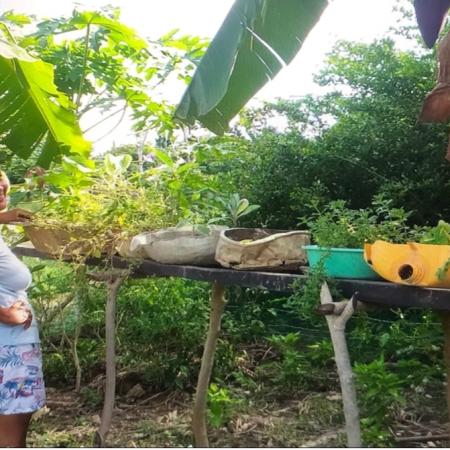
Luz Mary Ordoñez no sabía qué esperar cuando se enteró en un noticiario de las medidas del Gobierno de Colombia para hacer frente a la crisis del COVID-19. Le asaltó el miedo a la incertidumbre. Esto no es algo nuevo para Luz Mary. Lo ha vivido muchas veces antes. Para muchas comunidades como Las Palmas, donde vive Luz Mary, el futuro ha sido incierto durante años, pasando de inundaciones extremas a profundas crisis de agua como consecuencia de fenómenos extremos.
Una de las estrategias promovidas por el proyecto es la implantación de agroecosistemas biodiversos para mitigar el cambio climático en esta región. El enfoque de los agroecosistemas biodiversos integra el uso variado y sostenible de los cultivos e incorpora la gestión de riesgos ante fenómenos climáticos adversos, con el objetivo de garantizar el suministro de alimentos a las familias durante todo el año. En la actualidad, los enfoques de agroecosistemas adaptados al clima cambiante están reduciendo los impactos del COVID-19 en las comunidades de La Mojana.
Gracias a las prácticas agrícolas resistentes al clima y a la mejora de la producción, dispondrán de alimentos sanos y nutritivos para los próximos meses, además de fondos de emergencia adicionales procedentes de los excedentes de los productos vendidos en los mercados locales. Estas ayudas también contribuirán a proteger a estas comunidades de los embates de tormentas e inundaciones cada vez más intensas. De este modo, cuando se produzcan otras crisis, las familias de La Mojana no se verán obligadas a emigrar o a perder sus granjas y sus medios de subsistencia.
"Gracias al proyecto he aprendido muchas cosas. Una es cómo cuidar el agroecosistema. Esto ha influido en mi vida, y gracias a ello he redescubierto mi amor por la naturaleza. Hoy recibimos los materiales y suministros, y la mayoría de nosotros no sabíamos qué hacer durante esta cuarentena, pero ahora vamos a aprovechar el tiempo desde que estamos en casa y trabajar en el agroecosistema comunitario para prepararnos para el invierno. Esto nos ayuda mucho y mantiene a la familia unida. Plantaremos nuestras verduras y cultivos, además de utilizar el depósito de agua que tanto necesitamos durante esta sequía, y estamos profundamente comprometidos a seguir adelante y superar esto."
Historia completa: https://undp-climate.exposure.co/gcf-mojana


